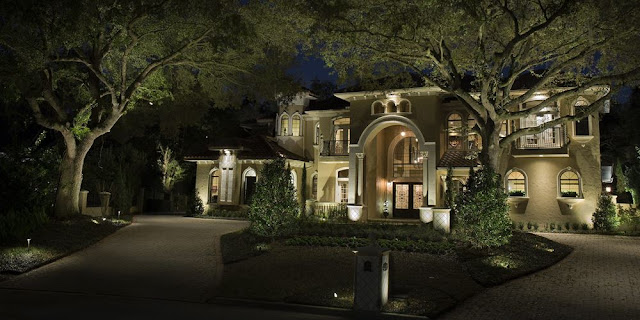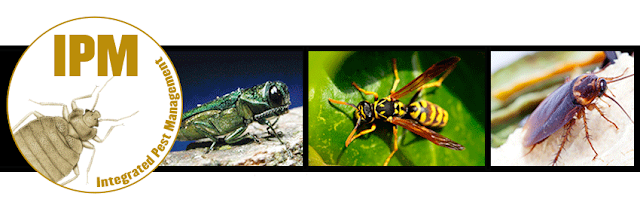Lighting Up the Landscape: Lighting Effects in Water Features
Lighting Up the Landscape
Lighting Effects in Water Features
Lighting Effects in Water Features
Off-season lighting can create a
total shift in dynamic comparative to spring and summer, especially with variations
in colour contrast. Specific types of lighting¹ can enhance the aesthetic and
functionality of landscape design and can be revised to compliment the
atmosphere or mood of a season. In particular, night lighting in the landscape
is especially important in the autumn and winter months when daylight hours
slowly recede into quiet solitude. In Lighting
Up the Landscape, we will explore the basics of lighting effects on
softscaping and hardscaping design elements.
Lighting can optimize the aesthetic and functionality of water features through the exploitation of two main behaviours characteristic of water, reflection and refraction. Reflection is the abrupt change in the direction of wave propagules that strike the boundary between two different media, where at least a fraction of the incoming wave remains in the same medium. A quintessential example of reflection is viewing an object’s image in a mirror. Mirroring (syn. mirror lighting) is a lighting technique where an object is subject to accent lighting on the far side of a water entity, which results in a replicated image in the water. Mirroring is predominantly used on objects exhibiting a light colour and a clear or sharp outline, such as classical urns, statues and busts. Mirroring is also commonly used on stationary water to avoid diffuse reflection². The purpose of mirroring is to provide a surreal aesthetic in the landscape that can be viewed from an elevation profile, such as a patio, house or deck.
Lighting can optimize the aesthetic and functionality of water features through the exploitation of two main behaviours characteristic of water, reflection and refraction. Reflection is the abrupt change in the direction of wave propagules that strike the boundary between two different media, where at least a fraction of the incoming wave remains in the same medium. A quintessential example of reflection is viewing an object’s image in a mirror. Mirroring (syn. mirror lighting) is a lighting technique where an object is subject to accent lighting on the far side of a water entity, which results in a replicated image in the water. Mirroring is predominantly used on objects exhibiting a light colour and a clear or sharp outline, such as classical urns, statues and busts. Mirroring is also commonly used on stationary water to avoid diffuse reflection². The purpose of mirroring is to provide a surreal aesthetic in the landscape that can be viewed from an elevation profile, such as a patio, house or deck.
Figure 1. Busts of Bacchus and Bacchae
exhibiting the mirroring technique. The reflection of light-coloured objects in
a dark coloured medium can create the illusion of dimension and provide an
alternative source for underwater lighting (Alreja, 2011†).
Refraction is the change in the direction of wave propagules that pass from one type of transmission media to another, which decreases speed and results in a distorted image. Refraction commonly occurs when a wave travels from one medium to another at any other angle than 0º of normal. A good example of refraction is when light travels through air into a glass of water.
Refraction is the change in the direction of wave propagules that pass from one type of transmission media to another, which decreases speed and results in a distorted image. Refraction commonly occurs when a wave travels from one medium to another at any other angle than 0º of normal. A good example of refraction is when light travels through air into a glass of water.
Figure 2. Examples of underwater lighting fixture locations for various types of water features. Note how the principle of refraction is used to create a dynamic effect of uplighting in the water (Alreja, 2011†).
A common lighting effect integrated into water features is uplighting, which exploits the
refraction of water from beneath the surface to create extra dimension in the
water or to accentuate the texture of water features such as fountains,
statues, walls or aquatic plants. In general, uplighting is used on moving
water features, such as fountains and waterfalls. Complex water features
requiring tiered or layered lighting require a combination of other lighting effects
such as downlighting, crosslighting, accent lighting, direct or indirect
lighting.
Figures 3–5. Fig. 3. Uplighting from the
lower basin creates a dynamic effect when it interacts with the water falling
from the fountain, while crosslighting accentuates the textures of the statues
and upper basin. Fig. 4. Uplighting of
the waterfall produces a shimmering effect on the brick structure, while
crosslighting of the water staircase adds texture, dimension and movement. Fig.
5. Uplighting can be utilized to achieve symmetry and balance in a landscape.
The underwater lighting in this pool provides a rhythmic central focus (Alreja,
2011†).
Lighting is a complex subject in landscape design, yet even more so for
water features due to safety concerns with water and electricity. It is
recommended to hire a professional to ensure underwater lights are installed
properly and never attempt to install lights yourself without prior
consultation of a professional.
¹ – Downlighting, uplighting, crosslighting, accent lighting, spotlighting, area lighting, floodlighting, spread lighting, moonlighting, step/vista lighting, grazing, washing, mirroring, silhouetting, shadowing, halo effect, direct lighting and indirect lighting.
² – A type of reflection that occurs when light is reflected off of an uneven or rough surface, resulting in a cloudy image.
† – Chapter XIII:
Lighting Garden Features – Water Features in Lighting in
Landscape by Anu Alreja (B.Ar.,
Dr. Bhanuben Nanavati College of Architecture).
-
When in doubt, contact a professional to ensure your landscape can be enjoyed for years into the future. Contact us for a design consultation today!
Prairie West Landscapes
3541A 78 Ave SE
Calgary, AB T2C 1J7
(403) 252-6330







Comments
Post a Comment